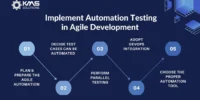Welcome to the world of Voice Technology Validation, where the nuances of sound meet the precision of technology. In this article, we’ll explore quick tips to ensure your voice applications resonate seamlessly with users, creating a symphony of user experience.
The Melody of Voice Technology: Orchestrating a Seamless User Experience
Voice technology has become an integral part of our daily interactions, from virtual assistants to voice-activated applications. Before we dive into the tips, let’s appreciate the melody of voice technology and how it orchestrates a seamless user experience. ️
Quick Tips for Testing Voice Applications
5. Consider Diverse Accents and Languages: Kickstart your voice technology validation journey by considering the diversity of accents and languages. Users from different regions and cultures may interact with your voice application. Ensure that your application understands and responds accurately to a variety of accents and languages. ️
4. Test in Real-World Noise Environments: Enchant your voice applications with the real-world magic of varied noise environments. Users may interact with your application in bustling cafes, busy streets, or quiet offices. Test your application’s performance in different noise conditions to ensure clear voice recognition and understanding. ️
3. Validate Speech-to-Text Accuracy: Infuse your voice application testing with the precision of speech-to-text accuracy. Verify that your application accurately transcribes spoken words into text, capturing the user’s intent with high fidelity. Accurate speech-to-text conversion forms the foundation of effective voice interactions. ️
2. Assess Natural Language Understanding (NLU): Empower your voice applications by assessing Natural Language Understanding (NLU). Users often communicate naturally with voice assistants, and your application should comprehend and respond contextually. Test the NLU capabilities to ensure your application interprets user input accurately and delivers relevant responses.
1. Conduct Extensive User Testing: The cornerstone of successful voice technology validation lies in extensive user testing. Invite a diverse group of users to interact with your voice application and provide feedback. User testing not only validates technical aspects but also offers insights into the overall user experience, helping refine and optimize your application.
The Inverted Pyramid Approach: Ascending to Voice Technology Excellence ️
Ascending to Voice Technology excellence follows the inverted pyramid approach. Start by considering diverse accents and languages, test in real-world noise environments, validate speech-to-text accuracy, assess Natural Language Understanding, and conduct extensive user testing. The journey to testing voice applications is a step-by-step ascent to ensuring a harmonious symphony of sound in your applications.
Harmonizing User Experience: Mastering the Art of Voice Technology Validation!
In conclusion, Voice Technology Validation is the art of harmonizing user experience through meticulous testing. By incorporating these quick tips, you’re not just testing voice applications; you’re mastering the art of ensuring a seamless symphony of sound in your applications. May your voice technology journey be filled with clear communication, user satisfaction, and the sweet melody of successful interactions!








